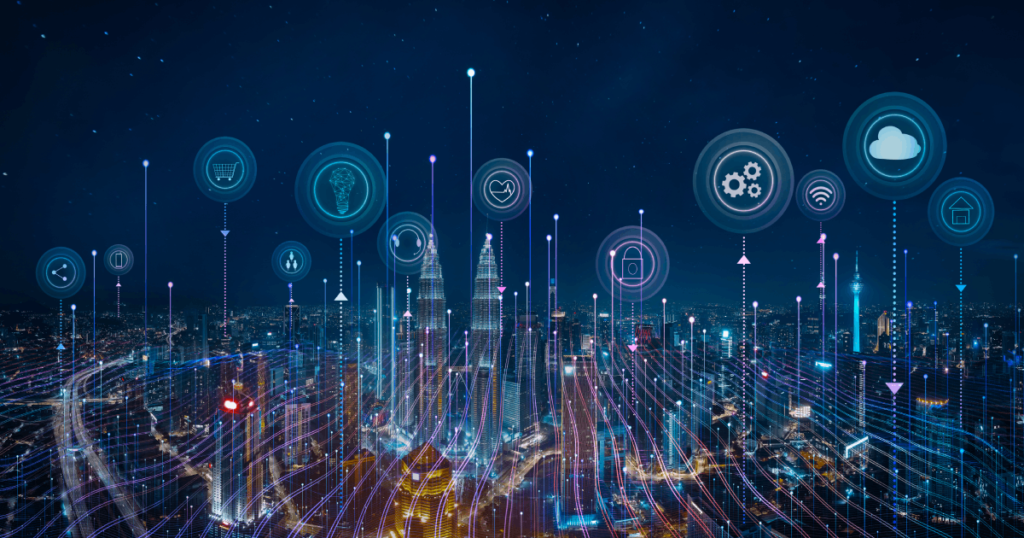The advent of 5G technology marks a significant milestone in the evolution of the Internet of Things (IoT) and the development of smart cities. With its unparalleled speed, low latency, and ability to connect a vast number of devices simultaneously, 5G is set to revolutionize how we interact with our urban environments. This article delves into the role of 5G in enhancing IoT connectivity, enabling seamless communication between devices, and fostering the growth of smart cities that are more efficient, sustainable, and responsive to the needs of their inhabitants.
As we explore the transformative impact of 5G, you will learn about the key features that make this technology a game-changer for IoT applications. From smart traffic management systems that reduce congestion to intelligent energy grids that optimize resource usage, the possibilities are endless. Furthermore, we will discuss how 5G facilitates real-time data processing and analytics, empowering city planners and residents alike to make informed decisions that enhance urban living.
In addition to examining the technical aspects, this article will highlight real-world examples of cities that are already reaping the benefits of 5G-enabled IoT solutions. By showcasing innovative projects and initiatives, we aim to inspire readers to envision a future where smart cities thrive on connectivity and collaboration. Join us as we uncover the pivotal role of 5G in shaping the cities of tomorrow and discover how this technology is paving the way for a smarter, more connected world.
As urbanization accelerates, the integration of technology into city infrastructure becomes increasingly vital. The advent of 5G technology is set to revolutionize the Internet of Things (IoT) and smart city initiatives, providing the necessary bandwidth and low latency required for seamless connectivity. This article explores various aspects of how 5G enhances IoT connectivity and contributes to the development of smart cities.
Enhanced Bandwidth and Speed
5G technology offers significantly higher bandwidth compared to its predecessors, enabling the simultaneous connection of numerous devices without compromising performance. This increased capacity is crucial for smart cities, where thousands of IoT devices, such as sensors and cameras, need to communicate in real-time. The ability to transmit large amounts of data quickly allows for more efficient traffic management, energy consumption monitoring, and public safety measures.
Moreover, the high-speed connectivity provided by 5G facilitates advanced applications like augmented reality (AR) and virtual reality (VR) in urban planning and maintenance. As cities adopt these technologies, they can visualize infrastructure changes and assess the impact of new developments more effectively, leading to better decision-making and resource allocation.
Low Latency for Real-Time Applications
One of the standout features of 5G is its ultra-low latency, which is essential for applications requiring immediate feedback. In smart cities, this capability is vital for systems such as autonomous vehicles, emergency response services, and real-time surveillance. For instance, a connected vehicle can communicate with traffic signals and other vehicles to optimize routes and reduce congestion, enhancing overall traffic flow.
Additionally, low latency enables smart city applications to respond to emergencies more effectively. For example, in the event of a fire or medical emergency, IoT devices can relay information to first responders instantly, allowing for quicker action and potentially saving lives. This responsiveness is a game-changer for urban safety and efficiency.
Scalability of IoT Devices
5G networks are designed to support a massive number of connected devices, making them ideal for the expansive IoT ecosystems found in smart cities. With the ability to connect up to one million devices per square kilometer, 5G facilitates the deployment of a wide range of IoT applications, from smart streetlights to environmental monitoring systems.
This scalability allows cities to implement innovative solutions that can adapt to changing needs over time. For example, as more sensors are added to monitor air quality or traffic patterns, the 5G network can accommodate this growth without degradation in performance. This flexibility is crucial for the long-term sustainability of smart city initiatives.
Improved Energy Efficiency
5G technology not only enhances connectivity but also promotes energy efficiency in smart cities. The ability to connect and manage devices more effectively leads to reduced energy consumption. For instance, smart grids can optimize energy distribution based on real-time data, minimizing waste and lowering costs for consumers.
Furthermore, IoT devices powered by 5G can operate on lower energy levels, extending battery life and reducing the need for frequent maintenance. This efficiency is particularly beneficial for remote sensors and devices deployed in hard-to-reach areas, ensuring they remain operational for longer periods without human intervention.
Enhanced Security Features
As cities become more connected, the importance of cybersecurity cannot be overstated. 5G networks incorporate advanced security protocols that help protect sensitive data transmitted between IoT devices. This is crucial for smart city applications that handle personal information or critical infrastructure data.
Moreover, the decentralized nature of 5G networks reduces the risk of single points of failure, making it harder for cybercriminals to launch successful attacks. By implementing robust security measures, cities can foster public trust in smart technologies, encouraging wider adoption and participation in smart city initiatives.
Integration of Edge Computing
5G technology facilitates the integration of edge computing, which processes data closer to the source rather than relying solely on centralized cloud servers. This approach reduces latency and bandwidth usage, making it ideal for applications that require real-time data analysis, such as traffic management systems and public safety monitoring.
By leveraging edge computing, smart cities can enhance their operational efficiency and responsiveness. For example, traffic cameras equipped with edge computing capabilities can analyze vehicle flow and adjust traffic signals accordingly, improving overall traffic management and reducing congestion.
Supporting Smart Transportation Systems
5G plays a pivotal role in the development of smart transportation systems, which are essential for modern urban environments. With the ability to connect vehicles, infrastructure, and pedestrians, 5G enables the implementation of intelligent transportation solutions that enhance safety and efficiency.
For instance, connected vehicles can communicate with traffic signals to optimize routes and reduce travel times. Additionally, public transportation systems can utilize real-time data to improve scheduling and reduce wait times for passengers. These advancements contribute to a more efficient and user-friendly urban transportation network.
Future Prospects and Challenges
While the potential of 5G in enhancing IoT connectivity and smart cities is immense, several challenges remain. Issues such as infrastructure costs, regulatory hurdles, and the need for widespread adoption must be addressed to fully realize the benefits of 5G technology.
Looking ahead, collaboration between governments, private sectors, and communities will be essential in overcoming these challenges. By working together, stakeholders can create a roadmap for the successful implementation of 5G and IoT solutions, paving the way for smarter, more connected cities in the future.
| Aspect | Description |
|---|---|
| Introduction to 5G | 5G is the fifth generation of mobile network technology, offering significantly faster speeds, lower latency, and greater capacity compared to its predecessors. |
| Impact on IoT Connectivity | 5G enhances IoT connectivity by supporting a massive number of devices simultaneously, enabling seamless communication and data exchange among smart devices. |
| Low Latency | With ultra-low latency, 5G allows real-time data processing, which is crucial for applications like autonomous vehicles and remote healthcare services. |
| Increased Bandwidth | 5G provides higher bandwidth, facilitating the transmission of large amounts of data from IoT devices, which is essential for smart city applications such as surveillance and traffic management. |
| Smart City Applications | 5G enables various smart city applications, including smart lighting, waste management, and energy-efficient buildings, improving urban living standards. |
| Enhanced Public Safety | 5G supports advanced public safety solutions, such as real-time video surveillance and emergency response systems, enhancing the security of urban environments. |
| Challenges and Considerations | Despite its benefits, the deployment of 5G faces challenges such as infrastructure costs, regulatory hurdles, and the need for widespread coverage. |
| Conclusion | 5G technology is pivotal in advancing IoT connectivity and the development of smart cities, promising improved efficiency, sustainability, and quality of life for urban residents. |



